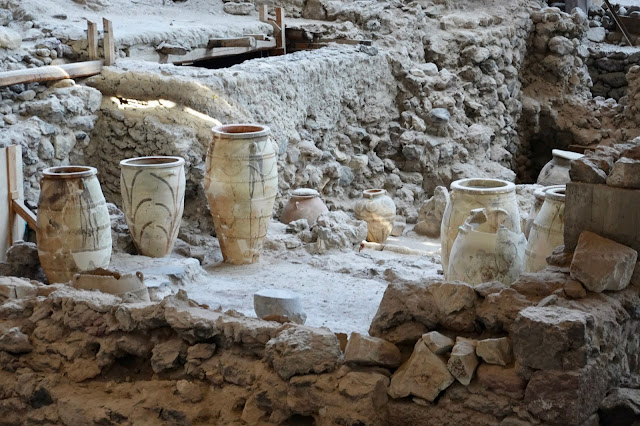There are so many archaeological sites in Greece that,
for someone not particularly versed or vested in their history,
they can all blur together.
The three I remember most vividly are
Akrotiri, on the island of Santorini and
Knossos and Gortyna on the island of Crete.
Akrotiri is the excavation site that revealed the remains of a city
destroyed by a volcanic eruption in 1630 BC.
As in 1630 BC, before Christ.
Maybe you can conceive of history extending that far back
and any remnant of it remaining intact until today,
but I'll admit,
I can't.
The site has been covered now to protect ongoing work.
What has been discovered so far are the remains of three and four story buildings,
houses supplied with fresh running water and drainage systems
as well as wonderful frescoes.
While some of the findings remain in situ,
we would see examples from the same site in museums throughout Greece.
Knossos is Crete's best known archaeological site
and the legendary home of King Minos and the famed beast, Minotaur.
I'll be honest,
I was just as taken with the countryside in which it was set
as with the discoveries that have been made.
Even at Gortyn, which was one of the most important cities in ancient Greece,
with a history going back over 6,000 years,
it was the setting that made it so appealing to me.
This city is where the "Gortyn Code' was founded,
which is the oldest and most complete known example
of ancient Greek law.
I can't help but wonder if this is the origin or reference being made in the phrase
"it's not written in stone".
"it's not written in stone".
Next up,
my visit to what became my favorite museum
on what would become my favorite island.
























No comments:
Post a Comment